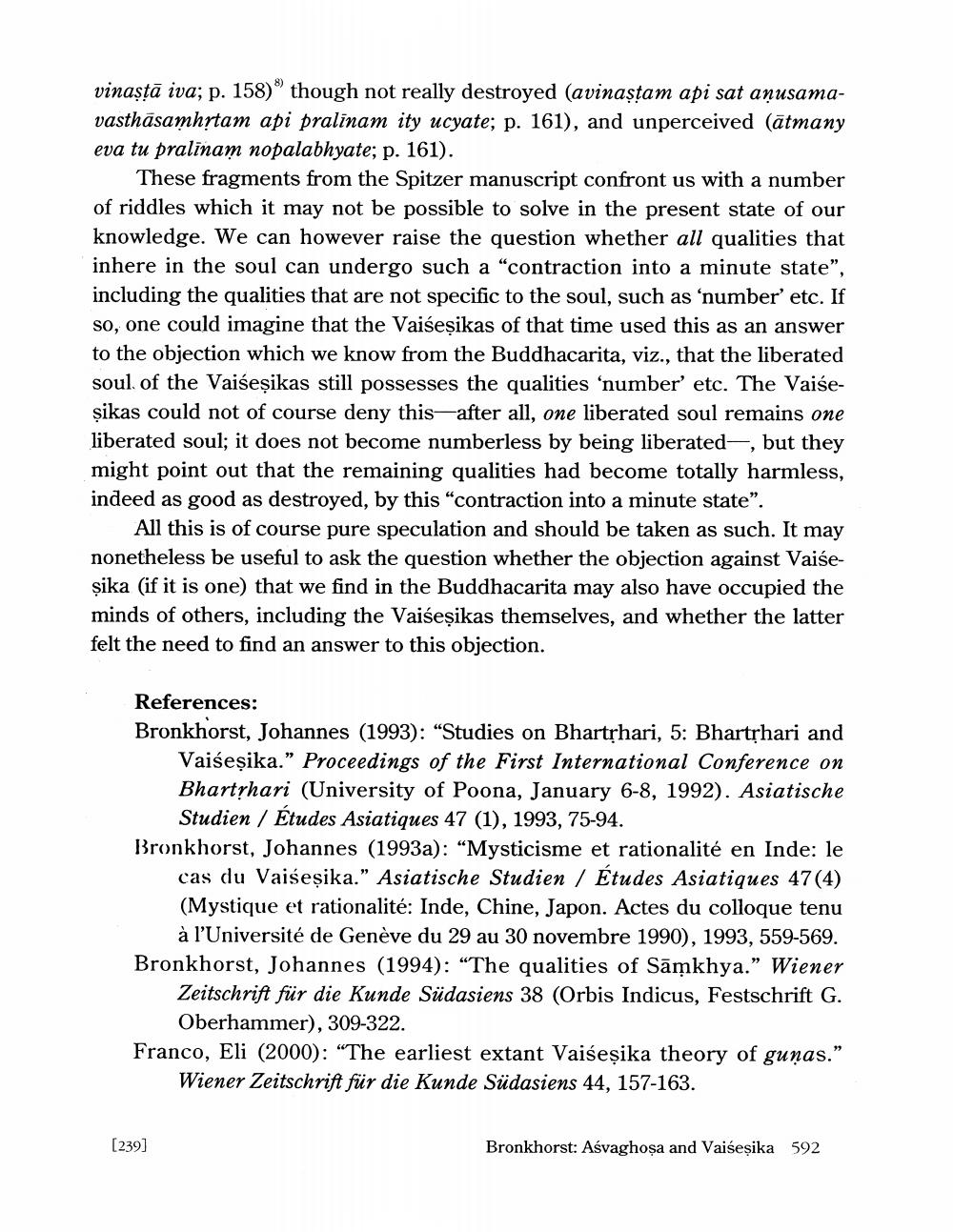________________
vinastā iva; p. 158)® though not really destroyed (avinastam api sat anusamavasthāsamhrtam api pralinam ity ucyate; p. 161), and unperceived (ātmany eva tu pralinam nopalabhyate; p. 161).
These fragments from the Spitzer manuscript confront us with a number of riddles which it may not be possible to solve in the present state of our knowledge. We can however raise the question whether all qualities that inhere in the soul can undergo such a "contraction into a minute state", including the qualities that are not specific to the soul, such as 'number' etc. If so, one could imagine that the Vaiseșikas of that time used this as an answer to the objection which we know from the Buddhacarita, viz., that the liberated soul of the Vaiseșikas still possesses the qualities 'number' etc. The Vaiseşikas could not of course deny this after all, one liberated soul remains one liberated soul; it does not become numberless by being liberated-, but they might point out that the remaining qualities had become totally harmless, indeed as good as destroyed, by this contraction into a minute state".
All this is of course pure speculation and should be taken as such. It may nonetheless be useful to ask the question whether the objection against Vaiseșika (if it is one that we find in the Buddhacarita may also have occupied the minds of others, including the Vaišeşikas themselves, and whether the latter felt the need to find an answer to this objection.
References: Bronkhorst, Johannes (1993): "Studies on Bhartrhari, 5: Bhartrhari and
Vaišeşika.” Proceedings of the First International Conference on Bhartrhari (University of Poona, January 6-8, 1992). Asiatische
Studien / Études Asiatiques 47 (1), 1993, 75-94. Bronkhorst, Johannes (1993a): "Mysticisme et rationalité en Inde: le
cas du Vaiseșika." Asiatische Studien / Etudes Asiatiques 47(4) (Mystique et rationalité: Inde, Chine, Japon. Actes du colloque tenu
à l'Université de Genève du 29 au 30 novembre 1990), 1993, 559-569. Bronkhorst, Johannes (1994): "The qualities of Sāmkhya.” Wiener
Zeitschrift für die Kunde Südasiens 38 (Orbis Indicus, Festschrift G.
Oberhammer), 309-322. Franco, Eli (2000): "The earliest extant Vaiseșika theory of guņas."
Wiener Zeitschrift für die Kunde Südasiens 44, 157-163.
[239]
Bronkhorst: Asvaghoșa and Vaiseșika 592




